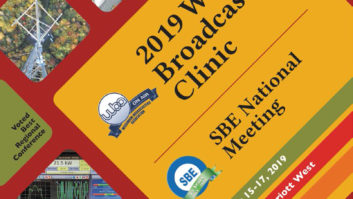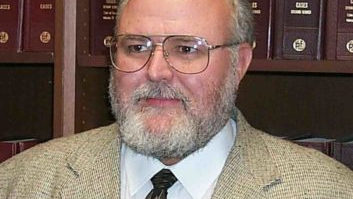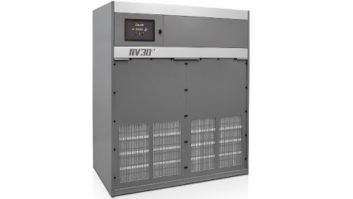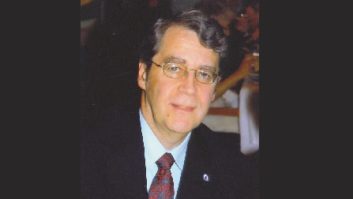The real cost of IBOC
Jun 1, 2002 12:00 PM
Reno, Nevada, is not a huge market, rating somewhere between 127 and 129 over the last four years. In a 75 mile radius of Reno, there are 34 AM/FM radio stations.
Something that happened only three years ago. After AT&T took over TCI cable, one television station, KDP-55, ended up losing their doors. They were only an LP-TV 1kW station, who AT&T decided that KDP was not powerful enough to be allowed on the cable. The local newspapers, local TV listing and even the national TV Guide would not publish the station or programming since their signal was not large enough to cover a wide part of the market area, which caused the station to not be able to gain enough revenue to stay open since fewer and fewer people even knew the station existed.
Of the radio stations in the main downtown of Reno, 22 stations are owned by four conglomerates, and rate more than 85 percent of Arbitron over the last four periods. Of the remaining stations,three are religious, three are Spanish/Hispanic, one is an NPR/PRI non-commercial. The remaining stations of the 34, fall in Carson City, South Lake Tahoe and Fallon.
The Spanish and independent stations are screaming bloody murder, as, just like KDP, they are fighting hard to get their call-signs listed in the local newspapers with their formats but seem to be falling on deaf ears.
They were listed beforehand, before the four �major� players consolidated the newly purchased independents. With the limited budget they have, they can�t afford to advertise on television either since they don�t have the buying power of the major players. They are sweating any change of equipment right now. Hopefully, you are right in that the FCC will probably not mandate the rules for IBOC, as the independent stations are afraid to buy any equipment now with so many different standards just for inside equipment.
Two examples:
For video alone … with eight different storage modes that I�ve counted … I have yet to find one DVD/CD style player that will play all formats. There may be a few units that play enough formats to only need two players, but at least with the home entertainment equipment companies I�ve rummaged through in the Reno area, I�d have to purchase three different players to be able to play all formats.
There are just so many standards, that it makes it very costly to mix/match equipment to make sure all signals flow. (The debacle of the C-QUAM AM between the FCC�s extended period to finally chose the standard; then the �big wigs� … Clear Channel, AMFM Inc., ABC/Disney, Infinity and a couple of others … deciding they don�t want AM stereo so they turn off their stuff … many manufacturers decide not to support it since the big wigs won�t spend money on it … and those independents are stuck with equipment that is on the air but is no longer supported after the expense they put out.)
The local independents I�ve talked to are afraid of the same thing with radio, that just as they think they have the equipment to play what is available, that a new format/standard will come out and they have to change again. Reading your article with all of the fees that may be accessed, may even bankrupt the smaller stations, should the FCC mandate the equipment and the fees become reality.
My opinion on IBOC, especially if placed in a vehicle, is that it could be quite a distraction to the driver, who may want to look at the information on the display instead of the road and may cause even more accidents than what already is happening with cell phones, people talking, eating, etc., while driving in good/bad weather and various types of congestion. When I listen to radio at home, I do it because I don�t want to have a distraction while I�m working, or to lull myself to sleep, or whatever, not needing that temptation to have to stare at it to see what is scrawling on the display as well. And there are millions of cars of the vintage era, that should there not be a backward compatibility to the broadcast, will have their radios silenced since to put something not within the era into a vehicle, will ruin the value of the vehicle.
I guess technology will do what it�s going to do, especially if you�ve got companies that own hundreds of stations and are the ones who [now] steer what technology will be and can support it, to the dismay of tight-budget small stations. Hopefully, we won�t lose the independents because of the deep pocket conglomerates.
Gregg E. Zuelke
independent contractor
Silver Springs, NV
More on the IBOCle
The other shoe dropped in the continuing IBOCcle story with Chriss Scherer�s reporting in his column [Viewpoint, May 2002] about the licensing fees to broadcasters proposed by Iniquity. In fact, this story already broke, like wind when someone cuts the cheese, at a recent SBE chapter meeting here. At least you would have thought that�s what happened by the reaction around the room. Fortunately, we didn�t shoot the messenger who shall remain nameless here. We appreciated his honesty in volunteering this information, heretofore unannounced.
Now with the news that AM IBOCcle should be shut down at night, it seems its fate should be sealed. I write this prior to the NAB convention and can hardly wait for the reports of the reaction there, assuming the reaction is accurately reported. Reaction from those closely associated with Iniquity, including anyone working for those companies which provide financial backing to it, should be taken with the appropriate grain of salt, or discarded altogether. After all, those companies won�t be taking as much risk since they�ll be effectively paying the ridiculous licensing fee to themselves. The latest BE Radio deals with the license fee issue in a column but also includes a one page article from someone associated with Iniquity which is pretty long on promises and pretty short on specifics. Looks like a sales piece to me.
It speaks of how we could (emphasis mine) have interactiveness IF there is a way to send back info from your car�s back seat, etc. Where is the hardware for this pie-in-the-sky scheme? Talk about selling the sizzle.
The various misspellings, as well as additions to well known acronyms, were intentional and meant to infer my opinion of the whole impending IBOCcle.
Mike Shane, CBRE
operations director
KCRO Radio
Omaha, Nebraska
Honest answers
Your Viewpoint on IBOC in the April issue of BE Radio was the most honest summary I have read to date on the subject. There has been some seriously negative editorializing in publications on IBOC recently. The technology may not be perfect but it keeps getting improving and the new PAC coding scheme should even be better. Digital radio is going to happen in the U.S. If not IBOC, then the FCC will find a separate band and broadcasting as we know it will change forever.
Susquehanna Radio has been purchasing IBOC-ready transmitters for several years and has capital money designated for the new technology rollout. Your editorial mentioned the costs and from a financial standpoint there will be little R.O.I. for IBOC as receivers are several years away from being plentiful. We will have increased power bills along with capital equipment costs while few people are listening to the IBOC signal. Radio has faced competition from 8-tracks, cassette, CD and in-vehicle video. We are now facing another new technological competition with digital satellite radio. I have listened to satellite and the lack of multipath interference is impressive. However, IBOC audio sounds better to me than satellite. Radio also has the advantage of mostly locally originated programming. That along with improved audio will keep radio viable into the future. Radio needs to migrate into an IBOC format to improve signal quality and remain competitive in the digital age.
Norman Philips
director of technical operations
Susquehanna Radio Corporation
Another view on streaming
I�ve just been reading the April issue, and have one comment: the do-it-yourself option for streaming doesn�t require two seperate machines for encoding and serving. they can be the same machine.
William Harrison
WETA-FM/TV
Washington, DC
The author, Stephanie Snyder responds:
It would be possible to use the same machine for both live serving and encoding, but it would not be recommended. We often tested that in R&D at my old company and it just isnt a stable solution for someone who wants a 24-hour-a-day stream for thier audience.
Mr. Harrison noted that he is doing this for a one hour show once a week. He also mentions that he sets it up to encode and then post the stream, so it doesnt sound like he is using it in a live application.
Serving streams places a heavy load on the processing power of a machine. Older machines simply do not have the processing power required to perform both features in live real-time applications. They will lock up often, taking own the streams for all users. Newer machines with higher processing speeds can do both�up to a point. A machine that can successfully encode and stream five or ten streams, will often start to reach it�s limit at 15, 20, or more users (depending on the specific hardware being used). Degraded performance will go through a few stages. First, the streams (of all users) will start to buffer more frequently. Next the encoder�s performance will be less stable and will slow down dropping packets, so the station wont sound as good. Finally the machine will lock up or blue screen, taking down all users.
This is not something I would reccomend to a station trying to set up its own always-on webcast.
Stephanie Snyder
Still remembers
Great magazine, but you�re making me feel like an old timer. In the April 2002Sign Off you have a picture of our standby transmitter , the Cetec Sparta 603. Ours is actually an Elcom Bauer 603. The headline reads Do You Remember?
Actually we not only remember it, we use it once in a while when necessary and it fires up every time. We had it in service as our main transmitter from 1983 until we upgraded to 25kW four years ago. I believe one of our competitors still has one in service every day. It is a good rig.
Maynard R. Meyer
engineer/general manager
KLQP-FM
Madison, MN
Details on WTAQ
The That was Then portion of the April Sign Off showed the studio of WTAQ. We could not identify the console, the turntables or the tonearms, but you certainly did. We were flooded with repsonses. The mixer was made by Sparta. Many readers told us that it looked like the AS-15, except that the AS-15 had five rotary pots. The mixer at WTAQ only had four pots. Becasue of this, it was pointed out that it had to be an AS-100.
The turntables and tonearms were a little more difficult in determining a single answer. Most readers think that the turntables are Rek-o-cut G-2, BH-12 or K-33 models with Gray Research tonearms. Some felt that the turntables are from Gates. Thanks to everyone who submitted their ideas.
Chriss Scherer
editor












